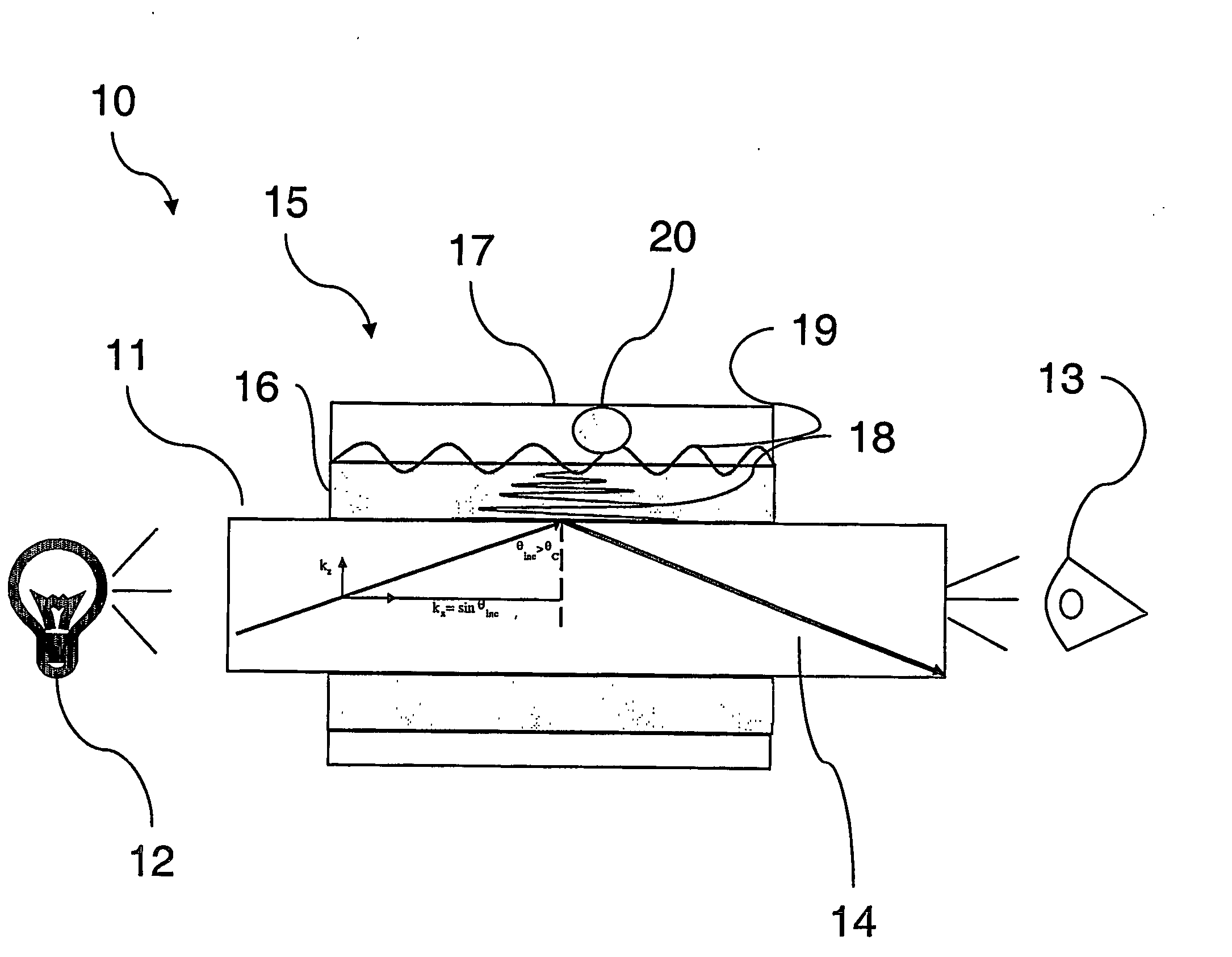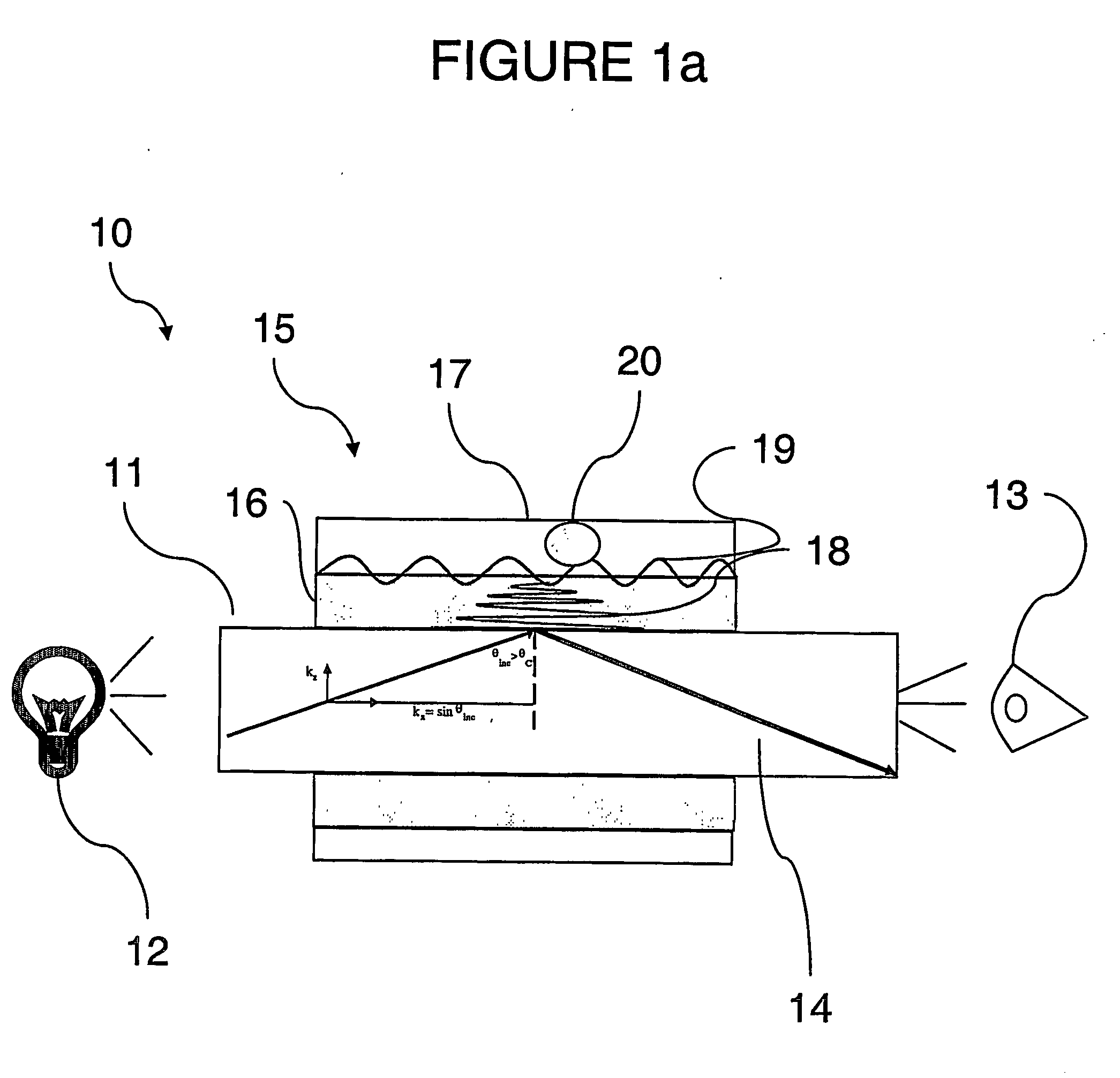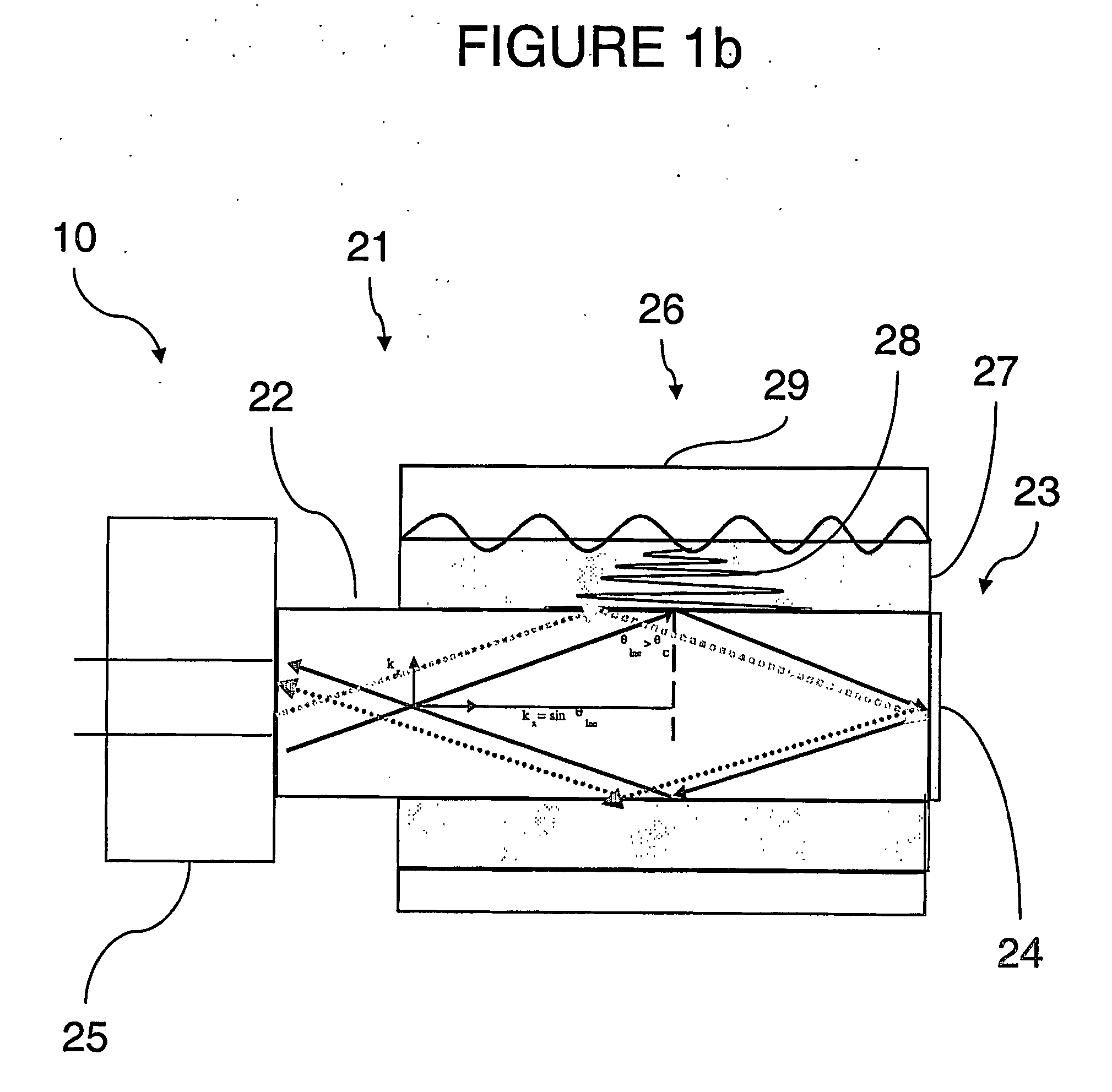Surface Initiated Thin Polymeric Films for Chemical Sensors
a technology of chemical sensors and polymeric films, applied in the field can solve the problems of limiting the applicability of luminescence based fiber optic sensors, affecting the field of application of surface active sensors, and requiring a long time to respond to luminescence,
- Summary
- Abstract
- Description
- Claims
- Application Information
AI Technical Summary
Benefits of technology
Problems solved by technology
Method used
Image
Examples
examples
[0048] The above general description of the surface active sensors in accordance with the current invention, and methods of manufacturing such sensors will be better understood with reference to the following non-limiting examples, which are directed to the detection of Pinacolyl Methyl Phosponate (PMP), a stimulant for the nerve agent Soman, toxic gases such as ammonia, and human antibodies such as myoglobin (MG) and cardiac Troponin I (cTnI).
[0049] Manufacture of the Fiber Sensor Element
[0050] The development of an exemplary fiber-optic based surface plasma resonance surface active sensor as shown in FIG. 1b has been well documented by Booksh et. al., “Sensitive and real-time fiber-optic-based surface plasmon resonance sensors for myoglobin and cardiac troponin I” J. F. Masson, L. A. Obando, S. Beaudoin, K. S. Booksh*, Talanta, 62, 865-870 (2004), the disclosure of which is incorporated herein by reference. In one exemplary embodiment, used in the examples described below, the f...
example
Cardiac Muscle Death
[0060] Although the above embodiments have focused on environmental chemical sensors the sensors of the current invention can also be profitably used in the medical field. For example, cardiac disease is among the leading causes of death in the United States. Methods that would allow fast, definitive diagnosis of myocardial infarction (MI) or ischemia will significantly improve patient care. Currently, when patients go to the hospital after experiencing chest pain, tests are performed that involve electrical monitoring of heart rhythm, and the analysis of blood samples for markers of cardiac damage, creatinine kinase and cTnI. Depending on the hospital, it can take as few as 4 or more than 10 hours to obtain results from the blood analysis. If cardiac damage is found, anti-thrombolytic agents are administered to clear the heart blockage, or a catheterization is performed to open the blocked vessel. Unfortunately, many patients enter the hospital with unstable an...
PUM
| Property | Measurement | Unit |
|---|---|---|
| thick | aaaaa | aaaaa |
| concentration | aaaaa | aaaaa |
| diameter | aaaaa | aaaaa |
Abstract
Description
Claims
Application Information
 Login to View More
Login to View More - R&D
- Intellectual Property
- Life Sciences
- Materials
- Tech Scout
- Unparalleled Data Quality
- Higher Quality Content
- 60% Fewer Hallucinations
Browse by: Latest US Patents, China's latest patents, Technical Efficacy Thesaurus, Application Domain, Technology Topic, Popular Technical Reports.
© 2025 PatSnap. All rights reserved.Legal|Privacy policy|Modern Slavery Act Transparency Statement|Sitemap|About US| Contact US: help@patsnap.com



